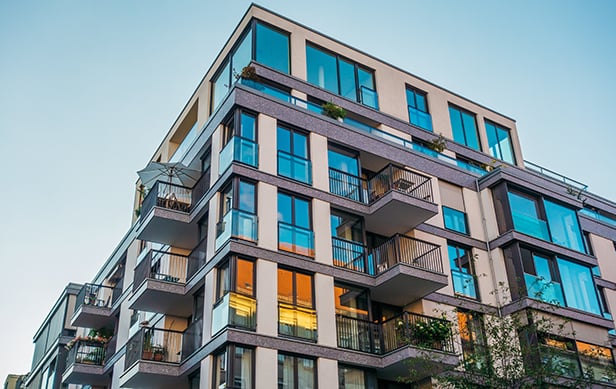
SAN DIEGO—San Diego had a strong third quarter in industrial absorption that benefitted from larger occupiers finalizing deals on some big blocks of space in Otay Mesa, Rancho Bernardo and Sorrento Mesa as space needs for industrial occupiers become increasingly more specific, CBRE VP Sean Williams tells GlobeSt.com. According to CBRE research, the San Diego industrial market saw a surge in absorption largely due to pent-up demand; after a relatively slow start to the year, the industrial market surged in Q3.
The report states that this demand has driven market fundamentals to record levels. With the market softening at the end of 2016 and beginning of 2017, net absorption numbers surged as a direct result of such high demand for quality space. Developers have responded by increasing construction activity for four consecutive quarters, culminating in the most construction activity in the post-recession era. Future construction deliveries should help alleviate pent-up demand, but the under-construction volume only represents 1.2% of the current industrial rentable building area. Considering 32% of current construction is pre-leased, the pent-up demand should continue for the near future.
We spoke with Williams about the surge in absorption and what he sees happening in Q4.
GlobeSt.com: What affected pent-up demand to cause the absorption surge in Q3?
Williams: For the first time in two years, net absorption broke 1 million square feet in a quarter with 1,053,400 square feet positively absorbed in Q3. Space needs for industrial occupiers are increasingly becoming more specific. Some popular site-selection criteria in San Diego includes warehouse clear heights, higher amounts of trailer parking, number of docks and higher supplies of power service. Also, Q3 benefitted from larger occupiers finalizing deals on some big blocks in Otay Mesa, Rancho Bernardo and Sorrento Mesa.
GlobeSt.com: What do you see happening in Q4?
Williams: While demand is expected to remain strong, a tight inventory of functional product will force occupiers to hunker down and wait or to take whatever is available in the market. This may make a repeat performance of Q3 difficult; however, San Diego's industrial market is forecasted to remain positive.
GlobeSt.com: What factors will affect absorption going into 2018?
Williams: The outlook for 2018 is favorable, there is estimated to be more than 750,000 square feet of construction deliveries in San Diego County next year. The significant volume of new product is expected be a catalyst for continued strong absorption. The future product is state-of-the-art, which will satisfy occupiers' flight-to-function trend—now occupiers will have brand-new product that will meet all their building requirements.
GlobeSt.com: What else should our readers know about the San Diego industrial market?
Williams: While some people pose the question, “What inning of the cycle are we in?,” I think the more poignant question is, What inning of the e-commerce cycle are we in?” Given the already immense impact e-commerce has had on industrial real estate, it will only increase as grocery, food, pharmaceuticals and reverse logistics become a greater part of the e-commerce world.

SAN DIEGO—San Diego had a strong third quarter in industrial absorption that benefitted from larger occupiers finalizing deals on some big blocks of space in Otay Mesa, Rancho Bernardo and Sorrento Mesa as space needs for industrial occupiers become increasingly more specific, CBRE VP Sean Williams tells GlobeSt.com. According to CBRE research, the San Diego industrial market saw a surge in absorption largely due to pent-up demand; after a relatively slow start to the year, the industrial market surged in Q3.
The report states that this demand has driven market fundamentals to record levels. With the market softening at the end of 2016 and beginning of 2017, net absorption numbers surged as a direct result of such high demand for quality space. Developers have responded by increasing construction activity for four consecutive quarters, culminating in the most construction activity in the post-recession era. Future construction deliveries should help alleviate pent-up demand, but the under-construction volume only represents 1.2% of the current industrial rentable building area. Considering 32% of current construction is pre-leased, the pent-up demand should continue for the near future.
We spoke with Williams about the surge in absorption and what he sees happening in Q4.
GlobeSt.com: What affected pent-up demand to cause the absorption surge in Q3?
Williams: For the first time in two years, net absorption broke 1 million square feet in a quarter with 1,053,400 square feet positively absorbed in Q3. Space needs for industrial occupiers are increasingly becoming more specific. Some popular site-selection criteria in San Diego includes warehouse clear heights, higher amounts of trailer parking, number of docks and higher supplies of power service. Also, Q3 benefitted from larger occupiers finalizing deals on some big blocks in Otay Mesa, Rancho Bernardo and Sorrento Mesa.
GlobeSt.com: What do you see happening in Q4?
Williams: While demand is expected to remain strong, a tight inventory of functional product will force occupiers to hunker down and wait or to take whatever is available in the market. This may make a repeat performance of Q3 difficult; however, San Diego's industrial market is forecasted to remain positive.
GlobeSt.com: What factors will affect absorption going into 2018?
Williams: The outlook for 2018 is favorable, there is estimated to be more than 750,000 square feet of construction deliveries in San Diego County next year. The significant volume of new product is expected be a catalyst for continued strong absorption. The future product is state-of-the-art, which will satisfy occupiers' flight-to-function trend—now occupiers will have brand-new product that will meet all their building requirements.
GlobeSt.com: What else should our readers know about the San Diego industrial market?
Williams: While some people pose the question, “What inning of the cycle are we in?,” I think the more poignant question is, What inning of the e-commerce cycle are we in?” Given the already immense impact e-commerce has had on industrial real estate, it will only increase as grocery, food, pharmaceuticals and reverse logistics become a greater part of the e-commerce world.
© 2025 ALM Global, LLC, All Rights Reserved. Request academic re-use from www.copyright.com. All other uses, submit a request to [email protected]. For more information visit Asset & Logo Licensing.







